Many people prefer laptops over mobile devices because of the laptop’s larger screen, attached keyboard, and overall greater flexibility. Are you one of these people but want a computer within a budget? Worry not! These laptops will bring great power to use for a budget of less than $500.
Previously, I have reviewed laptops of various price points. However, there’s a lot of interest for a laptop that costs less than $500 but delivers excellent performance. If you go too far below this price, the laptop won’t last long, and you will face lots of problems if you go for a used laptop if you decide to go for it based on a lower budget target.
Many brands have many laptops, each with unique features. This makes it difficult for you to find the right laptop. To help you with this, I bring you the best laptops under $500. All these laptops have among the best specs for a great price.
No need to research all laptops as I have already done the same for you. This article brings you my list of the best laptops that cost $500 and below. Rest assured that you will get a great value if you choose a laptop after reading my review.
However, before we move ahead with the same, let us look at the common mistakes that people make while buying a laptop.
[toc]Common Buying Mistakes to avoid:
Though most of the price of laptop is expensive, they are still have affordable choice. It might mean some cutbacks on the part of the manufacturer, but you can usually find a compact and reliable solution for $500 or less. Budget laptops are a great example of this, and they are used for everyday tasks such as browsing online and creating Word documents. These types of laptops are not heavy on hardware, and they do not offer superb graphics or lots of RAM; so they’re not ideal for intense gaming or demanding multitasking, but you save money and still possess the needed essentials in a laptop.
True to its name, budget laptops are designed to meet your budget, so manufacturers eliminate elements that are not critical, such as solid state drives. These cuts are not crippling to the laptop’s performance, however. Best Budget laptops are sturdy, built in a compact manner, and come with user-friendly and ergonomic keyboards and touchpads. Overall, budget laptops can be seen as a great introductory step to someone who is new to computers, and simply needs to perform standard tasks.
Most likely, you are not a brand new consumer, and have in mind what features are most important to you in a laptop. For example, the inconvenient hauling of a 17-inch laptop, or the streaming Netflix movies that accompany small 11 inch notebooks might be inevitable letdown. However, there are many options depending on what features you deem most valuable, so there will always be something for you. In addition, there are always exceptions to the rules.
Touch Screens: Helpful, or Impractical?
Due to the profitability of touchscreen devices, many laptops now have a touchscreen display. Windows 8 and Windows 10 were designed with touch in mind and many consumers today prefer touchscreens over the ‘traditional keyboard and trackpad only’ arrangement.
However, touchscreens are not perfect solutions and are fraught with drawbacks.
The first drawback for a budget user is the high cost of touchscreen laptops. Touchscreen feature alone raises the price of the computer.
Second, they are not always as user-friendly as they are said to be. Touchscreens are designed for tablets and can be an inconvenience when integrated with a laptop. Stretching forward to touch the screen puts the user in an uncomfortable position.
Some manufacturers construct laptops where the keyboard can be folded behind the screen to solve this problem. This essentially makes the laptop more like a tablet. Because the quality of these designs varies greatly, it is wise to investigate these options in more depth before making any buying decisions.
Building on the lessons learned with Windows 8, Microsoft tried to improve this feature in Windows 10. They attempted to regain the familiarity and comfort of the traditional mouse and keyboard experience. However, for consumers who need a laptop for basic use, touchscreens are an expensive and unnecessary hassle.
Looking for the Lowest Cost Laptop
Buying the cheapest laptop available is good for your wallet in the short-term. However, it might end up costing you more money in the long-term. For example, repairs are more frequent, and cheap laptops don’t last long. You may also have to spend money to add features that you may need in the future.
Let’s take an example. Pretend you want to decide between a dual-core and quad-core processor.
First, consider what it is that you need to accomplish with the laptop. Let’s say that you want to run multiple applications at once seamlessly. So, you purchase the dual-core processor instead of quad-core to save money as quad-core is more expensive.
Congrats! You have succeeded in saving money at the time of the purchase. But now you notice that the laptop struggles when you have too many applications running. So, you bought a computer yet defeated the purpose of purchasing a new laptop as your requirement is still not met.
Hence, instead of just buying the cheapest model available, consider what you want from the laptop. If you know precisely why you need the computer, you will know the features that are essential for you and you will also know what features you don’t need. When you have the list of features that you need in your laptop, compare your list with the spec sheets of each laptop that is in your consideration set.
This way, you will save money by avoiding unnecessary features, yet you will get everything you wanted on your laptop.
Falling for Unnecessary Features
We often want the latest features in our laptop even if they are unnecessary. Eye-catching ads that display the fantastic features of each laptop can overshadow the purpose of the computer you are looking to purchase. Some budget laptops are better than the top-end devices if you don’t want to spend on features you won’t be using anyway. For example, if you need a cloud-computing device for both work and school, a Chromebook will get you much farther than a gaming laptop will. In this instance, a super powerful processor is not the priority.
Therefore, always ensure you know why you need the laptop. Is it for work, school, design or gaming? What type of activities does your job, school, or studies demand you do on the laptop? What features will best accommodate this? Will this laptop be in replacing your desktop, or will you have access to both?
Answering these questions before you decide to buy a laptop will guide you to the right purchase.
The Importance of Ports and Compatibility
Different laptops contain a different combination of ports. What you need in your computer, be it an extra USB port or a card reader, should help you choose your laptop. Unfortunately, your options might dwindle at this point. Because of the popularity of the ultrabook, manufacturers are cutting down on the number of ports. If you prefer Apple devices, then a Thunderbolt 2 port is most likely what you need.
However, if you’ve been used to the more traditional external hard drives that feature USB 2.0 ports, you might be out of luck once again. Not all USB 3.0 ports are compatible. Thus, knowing precisely what ports you need and what is or is not compatible will help you narrow your search for a new laptop.
Becoming obsessed with one specification
It is easy to get distracted by specs when comparing laptops. One feature may grab your attention, even if the other features and specs are incompatible with your needs.
One example is the emphasis manufacturers place on RAM. The more RAM, the better. RAM is also cheap. So, including more of it is a simple way for manufacturers to increase profits. While it’s easy to be dazzled by how much RAM a laptop may have, you don’t need more than 8 GB RAM for regular use unless you are a gamer who needs to play top resource guzzling games at the highest setting. Hence, how much RAM a laptop does or does not have should not influence your final purchasing decision.
Most people get obsessed with laptop features like the screen resolution, the graphics card, the processor speed, and the battery life. Being on a budget means that you will need to balance between laptop features and price. A laptop that has a variety of compatible components is still preferable to a computer that excels in one, and only one, specific area.
The comparison of Best Laptops under 500 dollars:
[table “12” not found /]The Most Recommendation: :
The Best For Daily Use
ASUS VivoBook F510UA Laptop (Intel Core i5-8250U, 8GB RAM, 1TB, Great for Daily Use)
Slim & futuristic design, modern hardware, and an affordable price tag of $509 make the VivoBook F510UA the most admired laptop on our list. It will give you the best bang for your buck if your use is typical.
Let’s take a closer look at this VivoBook.
The CPU inside is an Intel Core i5-8250U from the latest generation of Kaby Lake R processors. It is clocked at 1.60 GHz and can turbo boost up to an insane 3.40 GHz. It comes with all the goodness of 4-cores with 8-threads, thanks to hyperthreading. To compare it with the previous generation of laptop processors, it outperforms the similarly priced i5-7300HQ. It also has a larger L3 cache of 6M.
This VivoBook comes with 8 GB of RAM which works wonderfully well with the high processing power of the CPU. You can multitask, run multiple VMs, stream multimedia, all at once without any noticeable change in the responsiveness of the system. General use cases, like checking emails, streaming high-resolution media on Netflix are all trivially easy for this device.
The only short-coming for this laptop, according to us, is its storage, which consists of a 1 TB hard disk drive. However, considering how inexpensively Asus priced this laptop, it is not surprising that they had to cut a few corners. If your budget permits, we highly recommend upgrading the computer with an SSD.
The graphics capabilities are powered by Intel UHD 620 Graphics which offers decent viewing experience on a 1080p display. It is not meant for gamers, but it is the latest integrated graphics offered by Intel.
Speaking of the viewing experience, Asus has used this opportunity to show off their marvelous engineering in the display side of the business. The display has a diagonal length of 15.6 inches, and a typical resolution of 1920 by 1080, which offers enough pixel density that the pictures look crisp and clear. It is an IPS panel with an anti-glare coating, so you don’t have to worry about viewing angles or color accuracy.
ASUS Splendid visual optimization technology offers four visual modes for the display. These are the Normal mode, the Eye-care mode, the Vivid mode and the Manual mode which provides both customizability and great out-of-the-box settings for your personal preferences. Along with this, the Asus Tru2Life visual technology enhances the video too, no matter what the source.
The body has a beautiful and consistent star gray finish with just black Chiclet keys and a black extremely thin bezel – Known as the NanoEdge display. The design looks just as futuristic as the hardware that is inside the laptop. It weighs only 3.7 pounds and is 0.8 inches thick. For additional security and convenience, it also has a fingerprint reader which is quite useful for office use-cases where you may have to lend your device to someone you don’t trust.
For connectivity, we get an HDMI port, a USB 3.1 Gen1 (Type-C) port, 1 USB 3.0 port, 2 USB 2.0 port, 3.5 mm jack for audio input/output and an SD card slot. For Wireless the dual-band 802.11ac works great!
To sum it up, this device is sleek, ergonomic, has decent computing capabilities and is quite future-proof as well. For the given price of $500, you will hardly find anything better for normal office use or general entertainment.
| Hardware Specifications | |
| Display | 15.6 Inch Full HD IPS Display (1920 x 1080) |
| Processor | Intel Core i5-8250U (Turbo up to 3.4GHz) [Benchmarks] |
| Graphics | Intel UHD 620 graphics [Benchmarks] |
| Storage | 1TB 5400RPM |
| RAM | 8GB DDR4 RAM |
| Operating System | Windows 10 Home 64-bit |
| Battery Life | Around 5 – 6 hours |
| Dimensions/Weight | 14.2 x 9.6 x 0.8 inches, 3.7 pounds |
| Comparison | Back to the comparison of best laptops under 500$ |
- Latest 8th Gen Processor Intel Core i5-8250U
- Crisp and Bright Display
- Best overall value
- 1 – USB 3.1 Type C
- Thin and Light
- No SSD
- Feeble Audio Output
- Slow hard drive (5400RPM)
>>More information and user reviews on Amazon<<
The Best Choice for Gaming
Acer E5-576G-5762 Gaming Laptop (Intel i5-8250U, GeForce MX150, 256GB SSD)
The Acer E5 is one of the first models to come out with both the latest CPU and GPU available in the market at the time. Eager early adopters, college students, and budget-conscious gamers may all want to take a look at this great laptop. Priced at $599, this is a marvelous model, and it has earned the editor’s recommendation for many good reasons.
The CPU is the Intel 8th gen i5-8250U with 4 cores, and hyperthreading enabled which allows applications to use up to 8 threads if needed. It is clocked at a base frequency of 1.6GHz but can turbo boost up to 3.4 GHz. This means that it can work longer consuming low power or do intensive workload depending on what you desire.
Applications like video editing and rendering, running VMs, compiling or decompiling software, and compression or decompression all will see massive improvements with this CPU compared to its older generation counterparts like i5-7200U and i5-7300HQ.
The single thread performance itself is quite impressive by being slightly ahead of the 7300HQ. This makes it the perfect option for gamers. The CPU is never going to throttle your games. Neither will the ample 8GB of dual channel RAM bottleneck your games. Although some applications might struggle with it a little, most games and apps will not be using all the resources ensuring that everything runs smoothly. In case you do want to upgrade your system, RAM and disk are easily accessible for you to swap them out.
For storage, we have a snappy and spacious 256 GB of SSD, which offers ample room for your game library and the media files as well. SSDs are always a welcome addition to any laptop; they improve its responsiveness. The loading screens on your display become considerably less annoying and much shorter and your PC boots in mere seconds.
But what a gamer needs the most is a GPU which can push a decent 60FPS and that too at higher visual settings. Nvidia’s GeForce MX150 is the one powering your games inside this device. It is an incremental update and still uses the Pascal architecture. However, when compared with the popular options in this price point, which are the 940MX it is much more powerful in raw benchmarks, and at the same time, it is power efficient as well. It has 2 GB of dedicated VRAM.
Display is proportionate to the GPU processing power. The 15.6 inch IPS panel has 1920 by 1080 resolution which is optimal for both official and entertainment purposes. IPS panel means you don’t have to worry about poor color accuracy or pathetic viewing angles.
The keypad and the rest of the ergonomics are mediocre but are never going to be a crutch, and the battery life is an insane 15 hours on average. For ports we get 1 USB 2.0, 1 HDMI, 2 USB 3.0 and 1 USB 3.1 gen-1 type C connector. It weighs 5.27 pounds and is 1.2 inches thick.
To sum it up, you will get a futureproof, powerful, upgradable laptop at only $599. Its battery life is so good you could almost forget that you need to charge it. It has portability, longevity, computing and gaming potential all at a very reasonable price!
| Hardware Specifications | |
| Display | 15.6 Inch Full HD IPS Display (1920 x 1080) |
| Processor | Intel Core i5-8250U (Turbo up to 3.4GHz) |
| Graphics | NVIDIA GeForce MX150 2GB DDR5 VRAM [View Benchmarks] |
| Storage | 256GB SSD |
| RAM | 8GB DDR4 RAM |
| Operating System | Windows 10 Home 64-bit |
| Battery Life | 6-cell Li-Ion Battery (2800 mAh), Up to 15-hours Battery Life |
| Dimensions/Weight | 15 x 10.2 x 1.2 inches, 5.27 pounds |
| Comparison | Back to the comparison of best laptops under 500$ |
- Intel i5-8250U CPU
- NVIDIA GeForce MX150 (Best GPU for gaming laptop around 500$)
- Easy to upgrade storage and RAM
- SSD
- 1 – USB 3.1 Type C
- Battery Life
- No HDD, only 256GB storage space
- Dim screen
>>More information and user reviews on Amazon<<
Other Recommendation:
Dell Inspiron 15 5000
The CPU inside is an Intel 8th gen i5-8250U which we have seen in the Asus VivoBook above. It is a 4-core, 8-thread part with clock speeds reaching up to 3.40GHz. This is quite a bit more powerful than most of the previous gen processors and comes with 6M of Cache to further its performance. 8GB of standard laptop memory kit is more than enough to work wonders with this beefy CPU.
Given that the price is still quite low, we fail to see any SSD in this product as well. Instead, Dell has decided to go along with its competitors and install a 1TB HDD which hampers the responsiveness of the system but offers larger storage capacity. If you were to install an SSD instead, it would be limited in storage capacity, but the IOPS would be so high that your system will boot in just a couple of seconds and your programs will load in no time.
The 15.6-inch display has a resolution of 1920 by 1080 built with IPS technology and up to 10 fingers of multitouch support. This makes it a really remarkable sketching tools for designers and content creators looking for a low budget device to start with. The beautiful silver-white body looks professional and appealing at the same time. The keyboard is backlit and ergonomically designed so you can work long hours on this device.
It weighs 4.85 pounds, and is 0.89 inches thick with an average battery life of up to 5 hours. Portability wise it is not a bad option; the only crutch is its poor battery life.
For connectivity, we have Wireless 802.11 ac, Bluetooth 4.2, Ethernet port, 2 USB 3.1 port, 1 USB 2.0 port and an HDMI port.
This is probably the most well-designed model on our list and nobody at can tell you that it is only $568 in price looking at the design or the computing horsepower that it possesses.
| Hardware Specifications | |
| Display | 15.6 Inch Full HD IPS Display (1920 x 1080) Touchscreen |
| Processor | Intel Core i5-8250U (Turbo up to 3.4GHz) |
| Graphics | Intel UHD 620 graphics |
| Storage | 1TB 5400RPM |
| RAM | 8GB DDR4 RAM |
| Operating System | Windows 10 Home 64-bit |
| Battery Life | Around 5 hours |
| Dimensions/Weight | 15 x 10.2 x 0.9 inches, 4.85 pounds |
| Comparison | Back to the comparison of best laptops under 500$ |
- Latest 8th Gen Processor Intel Core i5-8250U
- SSD
- 1 – USB 3.1 Type C
- Touch screen (10-finger multi-touch support)
- No SSD,
- Slow HDD (5400rpm)
- Dim screen
- Poor battery
>>More information and user reviews on Amazon<<
[/sociallocker]
HP Flagship Laptop
The term flagship gets thrown around quite loosely these days. Strictly speaking, the flagship is the best that the manufacturer has to offer in a given line of hardware. In the case of this laptop, ‘flagship’ refers to the best budget-oriented laptop that HP has to offer in 2023. It is priced at $530 and offers quite a unique set of features that sets it apart from its competitors.
The processor is our familiar i5-8250U with 4-cores/8-thread, 3.40GHz of clock speed (at turbo boost) and 6M of L3 cache. What takes it to the next level is the enhanced size of RAM and storage. We get 12 GB of RAM instead of the standard 8 GB kit we have been seeing so far.
This makes it especially useful for developers who are can allocate the extra RAM for running virtual machines for heavy development software like Visual Studio or Android Studio. The CPU supports a large number of concurrent threads and the it is supported by a larger memory. Both these factors help reduce the compilation time quite significantly and allows engineers to test builds quickly.
Similarly, for storage, we get an insane 2 TB of HDD capacity. Which can be used for installing an insane number of libraries, dependencies and software suites. This is also useful for maintaining a local version control system. Or for storing large number of test cases and the output from programs for analysis.
The hard-plastic body has a unique marine blue color for the outer chassis and the lid, whereas, the internals are dull black in color. The device is 0.9 inches thick, weighs 4.3 pounds and has an average battery-life of 8 hours. The display is the only place where HP had to make a budget-conscious decision. So we are left with a 1366 by 768 resolution display.
Connectivity wise the options include, Wireless 802.11ac, 2 USB 3.1 port, 1 USB 2.0 port, an HDMI port and an RJ-45 port for Ethernet connectivity.
The device is targeted towards developers and power users who are starting out and need something at a lower budget. The average person may not really appreciate the larger RAM and the low-resolution display can spoil the viewing experiences. Developers on the other hand, would love to use this for their daily jobs.
| Hardware Specifications | |
| Display | 15.6 Inch HD Display (1366 x 768) |
| Processor | Intel Core i5-8250U (Turbo up to 3.4GHz) |
| Graphics | Intel UHD 620 graphics |
| Storage | 2TB 5400RPM |
| RAM | 12 GB DDR4 RAM |
| Operating System | Windows 10 Home 64-bit |
| Battery Life | 3-cell lithium-ion, up to 8 hours |
| Dimensions/Weight | 14.9 x 10 x 0.9 inches; 3.77 pounds |
| Comparison | Back to the comparison of best laptops under 500$ |
- Latest 8th Gen Processor Intel Core i5-8250U
- 2 – USB 3.1
- 12GB RAM
- 2TB HDD
- 1366 x 768 (Not Full HD screen)
- No SSD,
- Slow HDD (5400rpm)
>>More information and user reviews on Amazon<<
Acer Aspire E15 Laptop
The Aspire E15 comes with an i7-7500U, 8GB of RAM and a standard laptop configuration for your daily computing needs. It is priced at $586 and comes with a robust build-quality and the trust from Acer. Let’s have a closer look at it.
First and foremost, the computing capabilities, the i7-7500U is slightly under powered than the latest gen i5-8250U but it gets the everyday job done. It has 2-cores/4-threads with 4MB of cache and a base clock-speed of 2.7GHz which can overclock to up to 3.50GHz. Being a low-powered CPU, it offers longer battery life over a single charge, as compared to the other HQ processors. Along with 8GB of DDR4 memory this can stream FHD media, do a decent bit of multitasking, or handle a VM instance inside it. CPU intensive tasks like multiple VMs and rendering videos are going to tax the system responsiveness.
The Benchmark Between i7-7500U vs i5-8250U:
| Cinebench 11 | Cinebench 15 | Photoshop | Fritz | |
| Core i5-8250U | 5.95 (+51%) | 531 (+53%) | 10.70s (-63%) | 10449 (+50%) |
| Core i7-7500U | 3.95 | 348 | 17.4s | 6946 |
For storage we again get a 1 TB of HDD which is not something a typical home user would desire. Upgrading to an SSD, even with limited storage, is highly recommended in these cases, unless you really need a terabyte of storage.
Next up is the display which is a 15.6 inch, 1920 by 1080 resolution panel which offers a decent viewing experience. Ergonomics is also well-sorted in this device. The Chiclet keyboard has a decent feel to it and the trackpad is large and precise. For both, long hours of work and entertainment this device offers a comfortable experience.
It weighs 4.9 pounds and is 1 inch thick. The battery lasts about 6 hours on average.
Connectivity options include 802.11ac for WiFi, 1 USB-C 3.1, 1 USB 3.0, 2 USB 2.0 and an HDMI port.
The laptop is simple, solidly constructed and with reasonably good hardware inside it. The only downside to it is the pricing, which can be reduced in the event of a discount sale. This is definitely a device meant for years of daily use.
| Hardware Specifications | |
| Display | 15.6 Inch HD Display (1366 x 768) |
| Processor | Intel Core i7-7500U (Turbo up to 3.5GHz) |
| Graphics | Intel HD 620 graphics [View Benchmarks] |
| Storage | 1TB 5400RPM |
| RAM | 8GB DDR4 RAM |
| Operating System | Windows 10 Home 64-bit |
| Battery Life | 4-cell li-ion battery; Up to 6 hours |
| Dimensions/Weight | 13.43 x 9.31 x 0.71 inches, 4.94 pounds |
| Comparison | Back to the comparison of best laptops under 500$ |
- Core i7-7500U
- 1 x USB 3.1 Type C
- Not the latest series of CPU
- No SSD
- Slow HDD (5400rpm)
>>More information and user reviews on Amazon<<
Dell Inspiron 15.6 inches
Similar to the last laptop Lenovo 320, this is a really budget oriented device aimed as an entry level device. Priced around 400$ this is an all Intel build for those of us who prefer not to use AMD. Let’s dig into the hardware details.
It comes with an Intel core i3-7100U with 2-cores/4-threads, clocked at 2.4 GHz and with 3M of cache. It would do the everyday browsing and multitasking jobs quite easily but it is not meant for CPU intensive tasks by any stretch. The memory that comes along with it is only 6GB in size and it is clearly a decision made to reduce the manufacturing cost of the system so as to keep the price low.
For storage we get yet another standard 1TB hard drive which is ample storage although at the expense of the systems responsiveness.
The display has a resolution of 1366 by 768 with multitouch support. This works wonderfully well with the Windows 10 tablet mode and pen mode for aspiring designers and artists. The laptop chassis is hard plastic and has a premium dull black color to it. It weighs 5.07 pounds and has a thickness of only 0.9 inches. The on-processor integrated graphics 620 from Intel is sufficient to power the display and to get creative using the touchscreen feature.
Connectivity options include 3 USB ports, an HDMI port, Bluetooth and 3.5mm audio input/output jack.
This laptop is meant for various use cases from casual home use for the family, to light-weight office use cases. Students too can pick it up if they are unsure of what they truly want to invest in. Once you realize where the bottlenecks are, the next purchase would be to eliminate those specific issues. This is a typical use-case for any entry level device.
| Hardware Specifications | |
| Display | 15.6 Inch HD Display (1366 x 768) Touchscreen |
| Processor | Intel Core i3-7100U (2.4GHz) (Benchmarks) |
| Graphics | Intel UHD 620 graphics |
| Storage | 1TB 5400RPM |
| RAM | 6GB DDR4 RAM |
| Operating System | Windows 10 Home 64-bit |
| Battery Life | 4-cell Lithium-ion |
| Dimensions/Weight | 15 x 10.2 x 0.9 inches, 4.85 pounds |
| Comparison | Back to the comparison of best laptops under 500$ |
- Touch Screen
- 1 – USB 3.1 Type C
- Touch screen
- Cheap (Price under 400$)
- No SSD
- Slow HDD (5400rpm)
- Not the latest series of CPU
>>More information and user reviews on Amazon<<
Lenovo 320 (Affordable Choice for Gaming)
One of the cheapest device on our list, the Lenovo 320 may not offer the best bang for the buck but its AMD hardware lowers the cost significantly to only $389 so any college student or a beginner can pick it up as an entry level laptop.
It comes with an AMD-A12-9720P which is similar in single core performance when compared against the i3-7100U from Intel and slightly better at multicore performance. It is a quad core processor clocked at 2.7 GHz and it can go up to 3.3 GHz when under load. With 8 GB of memory this works well for daily use of entertainment and productivity.
Most important of all is the graphics capability which is powered by A12-9720P’s Radeon R7. It performs better than the Intel’s integrated HD 620 graphics and is still viable for light weight gaming. The display is equivalently of a lower resolution at 1366 by 768 spanning 15.6 inches. For casual streaming and multimedia consumption as well as for applications like Word Processing and using an Office Suite, this configuration is ideal.
For storage, we again have a 1 TB hard disk drive with ample storage for media, software and personal files. Although supplementing it with an SSD would make the laptop seem much more responsive and smooth than what its budget would indicate. As always, SSDs are smaller in storage capacity so decision solely lies upon the user’s personal preference.
The display is a 1366 by 768 resolution panel with a diagonal length of 15.6 inches. The chassis has a metallic grey finish on hard plastic body with grey Chiclet keyboard. The build-quality is great with very little wobble on the lid and very little flex overall.
It weighs 5.51 pounds, with 5 hours of average battery life and a thickness of 0.9 inch. For connectivity we get, 1 USB-C port, 2 USB 3.0, an HDMI port, wireless 802.11 ac and Bluetooth. Also available is an RJ-45 port for Ethernet connectivity.
This laptop is really target as an entry level laptop for a budget conscious consumer who can then see what his/her needs are and later make upgrades accordingly. For office use cases like using a word processor, checking emails and browsing this works just fine and can save you up to $200.
| Hardware Specifications | |
| Display | 15.6 Inch HD Display (1366 x 768) |
| Processor | AMD A12-9720P (2.7 – 3.6GHz) (Benchmarks) |
| Graphics | Radeon R7 (Bristol Ridge) |
| Storage | 1TB 5400RPM |
| RAM | 8GB DDR4 RAM |
| Operating System | Windows 10 Home 64-bit |
| Battery Life | Up to 5 hours |
| Dimensions/Weight | 14.9 x 10.2 x 0.9 inches, 5.51 pounds |
| Comparison | Back to the comparison of best laptops under 500$ |
- AMD A12-9720P
- 1 – USB 3.1 Type C
- Cheap (Price under 400$)
- 1366 x 768 resolution
- May be noisy
- Poor battery
>>More information and user reviews on Amazon<<
Convertible Laptop
Lenovo Yoga 710
Lenovo Yoga is quite a unique product on this list. It is a responsive, light-weight and snug little 11.6-inch laptop meant for those of us who are sick of bulky 15-inch laptops. It is priced at $469.
The CPU is a very power-efficient Intel Pentium 4405Y clocked at 1.5GHz. This is the perfect balance between mediocre performance and increased power efficiency which means longer battery-life. It has only 4 GB of DRAM for only the most basic use cases that a college student or a typical home might have.
The storage is a snappy 128GB SSD which is really a delightful sight at this price range. The SSD alone can make this innocent and weak-looking hardware perform like a premium responsive device.
The aluminum chassis further improves its presentation. The silver body with black backlit keyboard and bright touchscreen is a really inviting and appealing sight. Speaking of which, the display is a 1920 by 1080 resolution FHD dislay with touch support. It is a 11.6-inch panel making the higher resolution look all the more crisp and clear.
Lenovo is famous for their sturdy build quality and this convertible certainly lives up to the mark. The hinges are sturdy yet smooth to adjust and the premium dull gray finish makes this laptop stand apart from the rest. The black Chiclet keyboard is backlit allowing you to type even under dim lighting. However, there is no numeric pad since this is a small form factor device.
The battery can last up to 9 hours in a single charge and the device weighs a mere 2.36 pounds and is only 0.6 inches thick. Making it extremely portable and outdoor-friendly.
For connectivity we get 802.11ac, Bluetooth, USB 3.0 port, mini HDMI port, and an audio jack.
If you like ultra-slim notebooks like the MacBook or the Surface book, then this is a really good budget alternative for you. It has the responsiveness of an SSD with longer battery and an ultra-small form factor at a mere fraction of the price.
| Hardware Specifications | |
| Display | 11.6 Inch FHD IPS Display (1920 x 1080) |
| Processor | Intel Pentium processor 4405Y dual-core processor (Benchmarks) |
| Graphics | Intel HD Graphics 515 |
| Storage | 128GB SSD |
| RAM | 4GB DDR4 RAM |
| Operating System | Windows 10 Home 64-bit |
| Battery Life | Up to 9 hours |
| Dimensions/Weight | 11.1 x 7.7 x 0.6 inches , 2.36 pounds |
| Comparison | Back to the comparison of best laptops under 500$ |
- SSD
- Cheap (Price under 400$)
- Thin and Light
- Battery life
- Low amount of RAM
- Small SSD
- Less USB Port
- For only the most basic use
>>More information and user reviews on Amazon<<
Budget Chromebooks Under $500
Google is trying to expand into the notebook market ever since it came with its Chrome browser. Most computers, regardless of Operating System, are running Chrome to browse the Internet.
Seeing that the budget laptops are used mostly for browsing the Internet and streaming videos, the Chrome OS is something you can consider. Google developed Chrome OS as something which is supposed to be always on the Internet.
If Internet connectivity is an issue for you, you might not want to consider this. Document editing is not big deal with Google Docs catching up with MS Office. Also MS office does have an online version to use in your browser.
That said, it does have some perks over Windows 10. First, Chrome OS is meant for low spec devices. It consumes less energy, it can run off of weaker processors and it need very little space on you storage. Making it a worthy contender on the budget notebook range.
Let’s dive in and look at some of the Chromebooks in a greater detail.
ASUS C302CA-DHM4 Chromebook 
The second device on this list with an ultra-small form factor is a Chormebook from Asus at a 12.5-inch form factor.
It comes with a Core-M3 processor from Intel, from the same series that is used in the latest MacBook 12 inches. It is an ultrabook specific processor which aims at offering performance at a very low power consumption. The memory in here is 4 GB in size, but considering that this device runs on Chrome OS and not Windows, it is a reasonable amount of space. Chrome OS is light-weight and meant to run on low specification hardware.
It again has a complete aluminum body and weighs only 2.65 pounds. The battery life is pretty decent at around 10 hours on average, on a single charge. The storage is limited to only 64 GB of flash media, but since you are getting a Chromebook, you do get 100 GB of free Google Drive space for two years. It would rely heavily on Internet connectivity to back up and retrieve files from Google Drive but in 2023, that is hardly a problem anymore.
The full HD display has a resolution of 1920 by 1080 with touch support and you can use the device as a convertible tablet as much as a notebook or a viewing device. The lid locks at different angles to provide ergonomic support for different use cases like viewing movies, reading a book or working on a document or browsing the Internet.
Connectivity options include, Wireless 802.11ac, Bluetooth 4.0, 1 USB Type-C and a microSD slot. Understandably, for a device this small it is impossible to cram in an Ethernet port.
This is yet another competitor for the low-price range ultrabooks that offers a light-weight, though limited, ChromeOS instead of the standard Windows system. The only downside is a slightly weaker performance, but you do gain a considerable amount of portability in the trade-off.
>>More information and user reviews on Amazon<<
Samsung Chromebook Plus
Chromebooks have evolved a lot over the past few years. The operating system is much more user friendly and the Google’s vast suite of apps can help you be as productive as you want may want to be. The Samsung Chromebook Plus priced at $433 offers quite a lot for the given price point as we will see.
The CPU and instruction set are completely different. The OP1 processor based off of the ARM architecture is essentially a hexa-core processor clocked at 2GHz designed specifically for handling ChromeOS. The 4GB of DDR3 memory is enough to support the light-weight ChromeOS as well as do quite a bit of multitasking on it. Writing papers, watching Netflix and opening large spreadsheets at the same time can be done without any noticeable lag. The storage is a meagre 32GB of flash memory and you may want to look into an external storage solution like a micro SD card or an external USB drive.
The display is an absolute beauty, it has an aspect ratio of 3:2 so as to provide decent view in both portrait and landscape modes. The resolution is quite high at 2400 by 1600 for 12.3 inches size, and it is made using Gorilla Glass 3 making it quite resistant to scratches. This is actually quite useful considering that it does have multi-finger touch support and the Chromebook can function in a tablet mode just as well.
The build and aesthetics is at par with any MacBook. The body is made from metal and has a dull silver finish to it. The laptop weighs only 2.4 pounds with maximum thickness of 0.55 inches. Making it an extremely easy choice if you don’t mind the lack of Windows or a large storage space.
The ports available are quite future-proof USB 3.1 Type-C connectors and we have two of these ports along with a micro SD slot and an audio input-output combo jack. Also included is a Pen to makes better use of the touchscreen for editing, taking notes, sketching and much more. The average battery life is an impressive 10 hours of light usage making it an ideal device to last all day without the need of a charger.
>>Read More information and user Reviews on Amazon<<
Acer Chromebook R13
Acer makes it to our list with this middle-of-the-road Chromebook which offers decent price to performance than most other in the market. The Chromebook is priced at $390 and is packed with all the features one expects from a small, compact laptop for productivity and entertainment.
The CPU is a 2.1GHz MediaTek_MT8127 which is based off of ARM architecture and is essentially a quad-core CPU. The next important parameter is the RAM and here we have 4GB of LPDDR3 RAM which performs quite well for ChromeOS which is light-weight and requires less memory. The storage is 32GB of flash storage along to be used most for apps and local backups. Chromebooks are essentially meant to work off of cloud storage so this is not going to be an issue as long as you have a good internet connection.
The display is a full HD 1920 by 1080 resolution IPS panel which spans 13.3 inches. It supports multi-finger touch and provides an immersive experience in both tablet mode and Chromebook mode. The display can turn a full 360 for a complete tablet experience where all the apps from the Google Play Store would run as if on an Android app. There are a number of intermediate modes for all types of use cases from watching movies to interactive sessions.
The construction is very robust and the metal body is very appealing both for aesthetics and ergonomics. The entire thing weighs 3.3 pounds and has a maximum thickness of 0.61 inches making is a very light and compact device. On top of this, the battery life is a whapping 12 hours that can easily last you for your entire day even by the least conservative estimates.
Lastly, we have a good mixture of various ports which include USB 3.1 Type-C port that can be used for high speed data transfer as well as high resolution display (Display port). Also included is a USB 3.0 port for your regular devices and an HDMI port with HDCP support. The WiFi 802.11 ac is also included along with a micro SD slot and a headphone/microphone combo jack.
>>Read More information and user Reviews on Amazon<<
Conclusion
The price point of $500 offers a myriad of options ranging from a standard 15.6-inch laptop to ultrabooks and chromebooks. Thanks to the newest coffee-lake processors you don’t need an expensive i7 anymore to handle the intensive work loads anymore. You can do it easily on your laptop.The options for aesthetics are similarly diverse and full of decent choices.
For office usages and college or school students the better portability is much more important. You can spend your entire day without having to worry about running out of battery and without carrying a heavy weight in your backpack. There are however, certain use cases which require Windows PC or the x86_64 architecture of Intel and AMD. Not all programs are features are available for the portable devices just yet, and it is here that you should go for the more powerful although slightly heavier option of having a regular laptop. Developers might also prefer higher computing performance over light weight. Understanding your own necessities is the only thing that remains now, before you pick one of these laptops.
The most recommended Asus VivoBook offers the best bang for your buck in this quest although people with different preferences might want something small, rather than something powerful. In those cases, the Ultrabooks would serve you well and good.
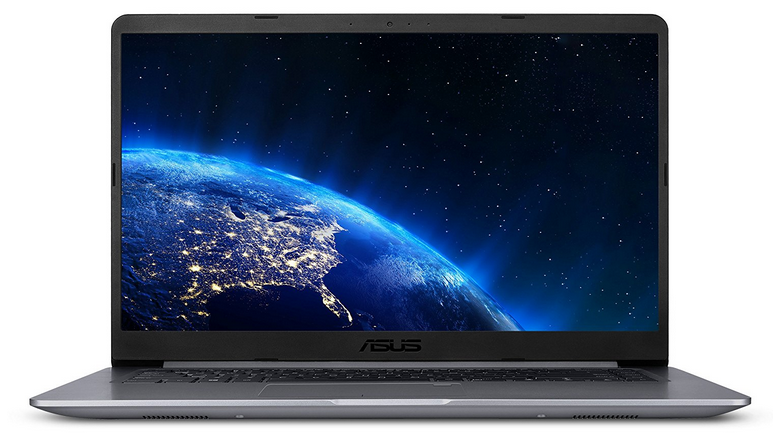
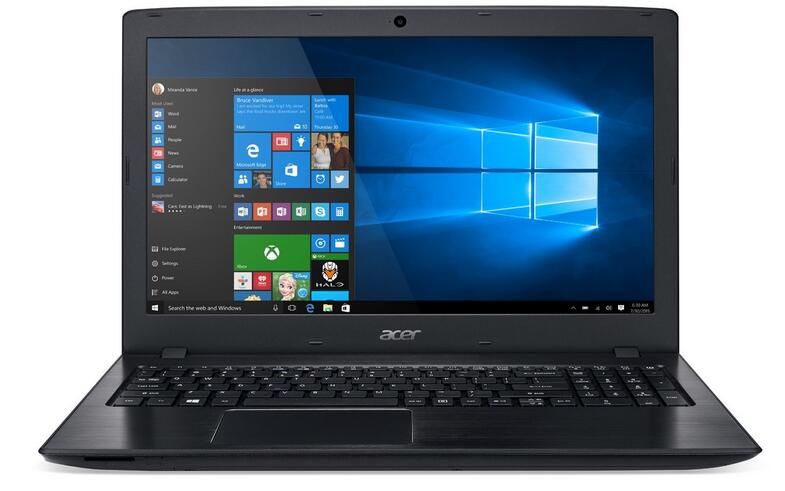
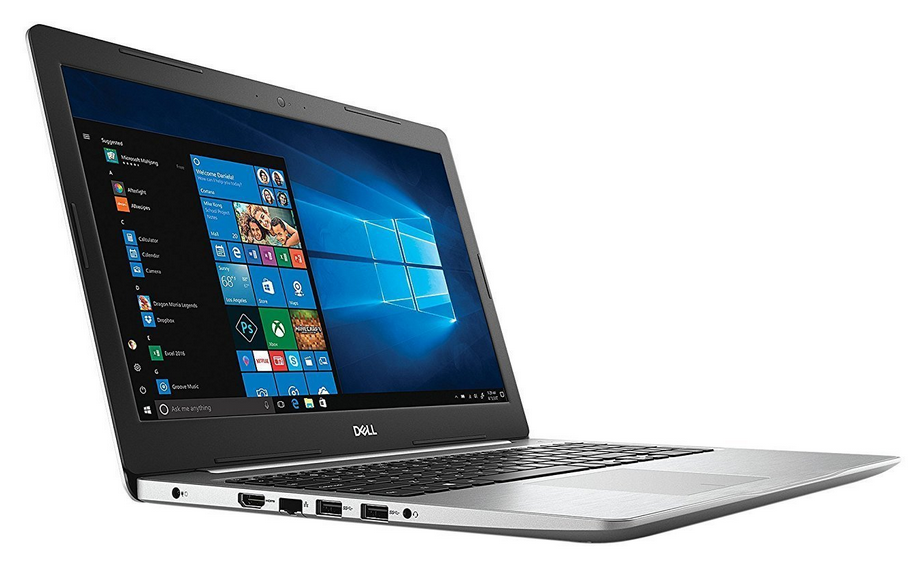
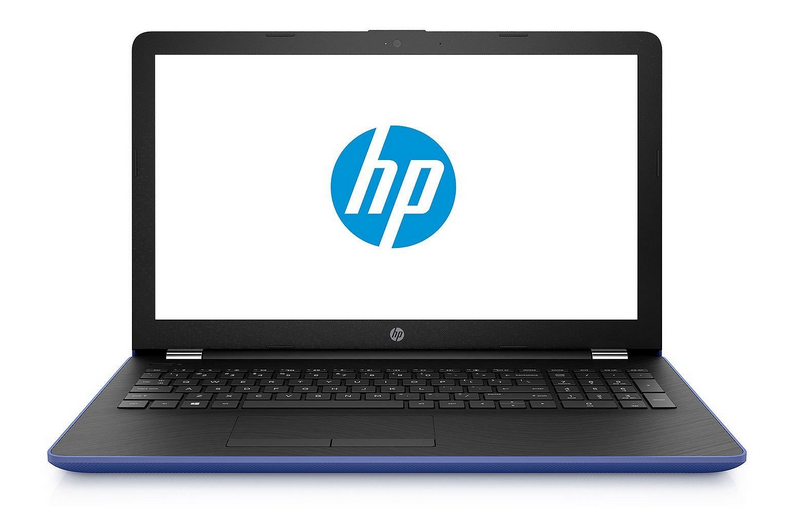
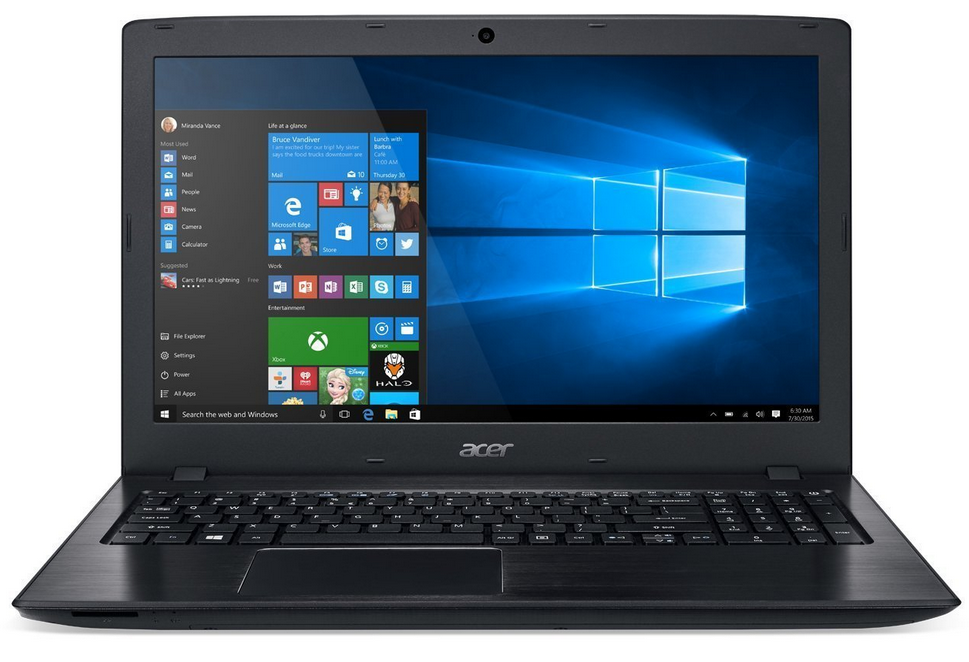
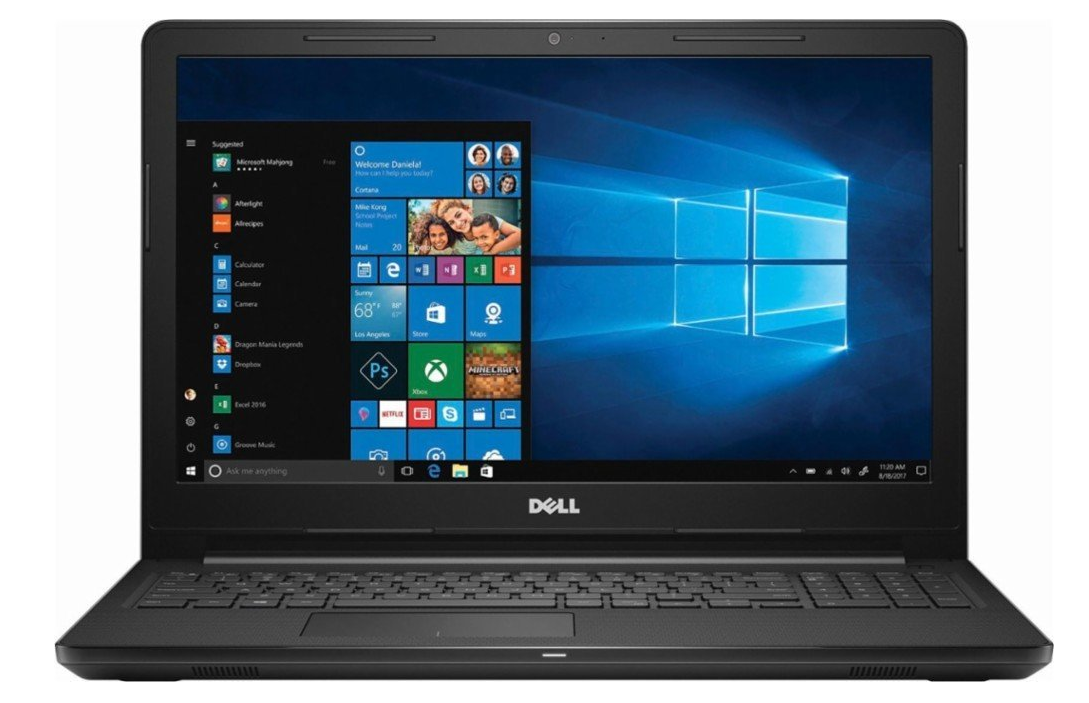
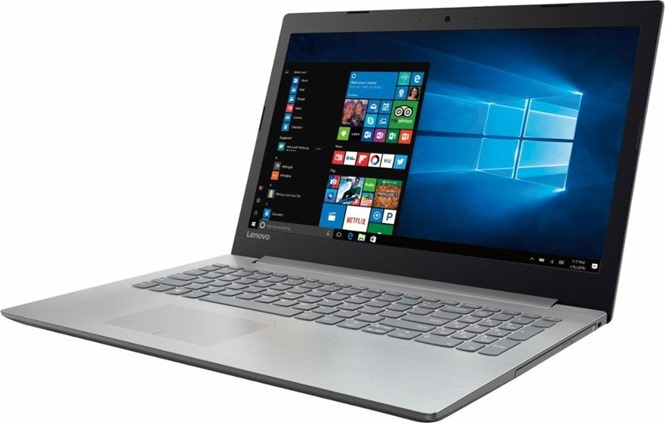
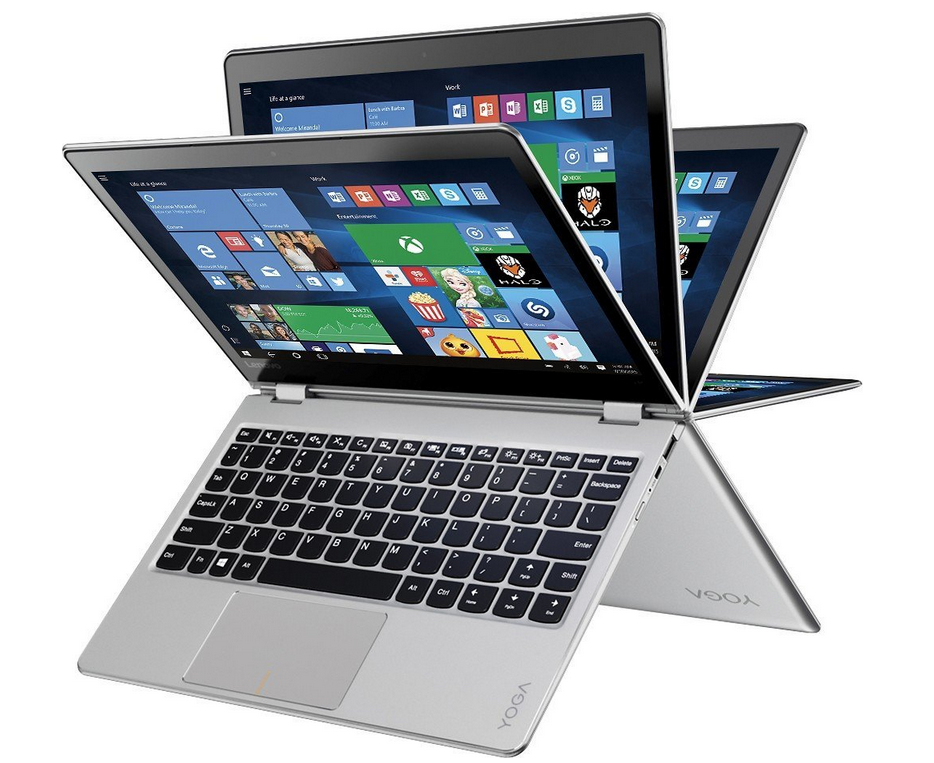
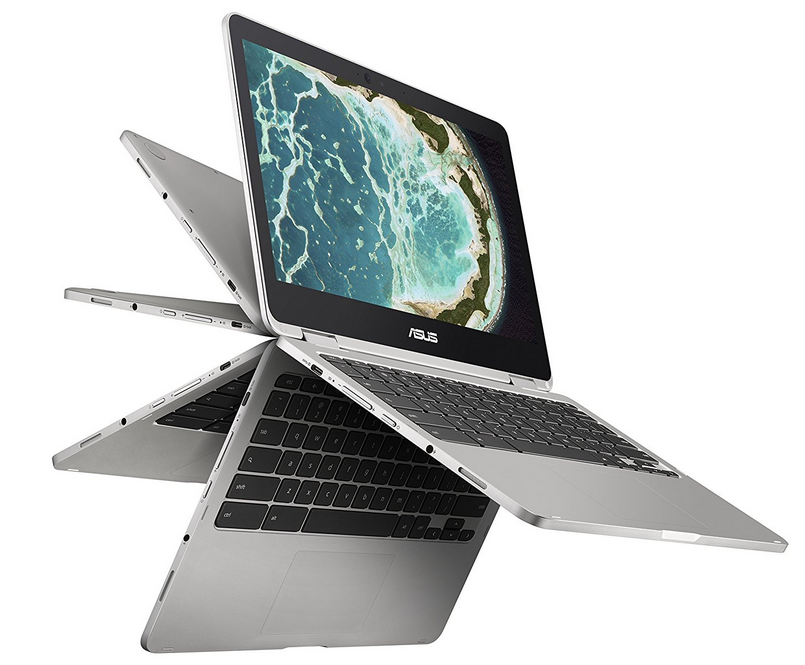
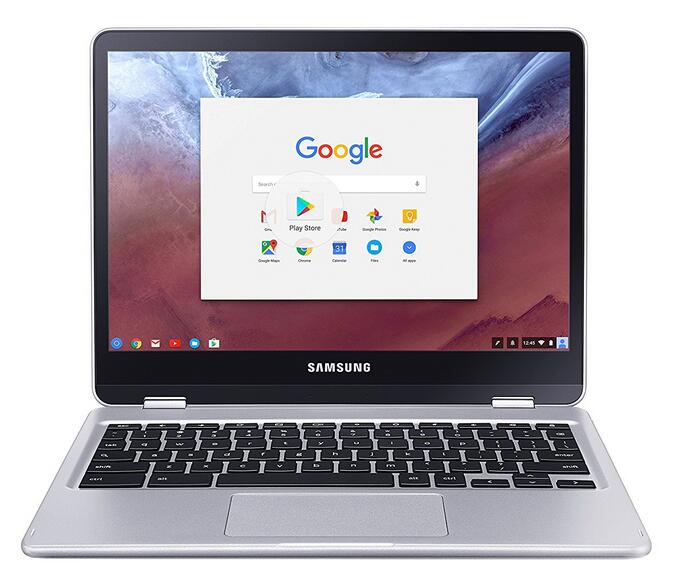
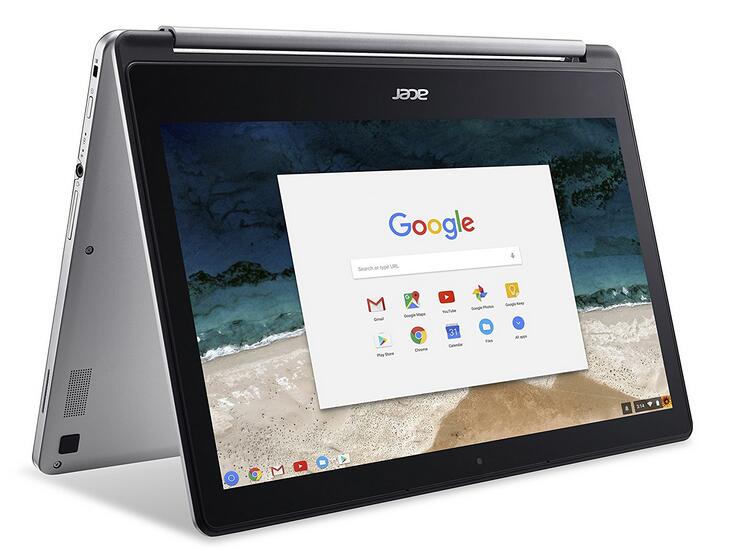
The Asus F510UA has a Kaby Lake R processor, not a Coffee Lake processor.
Thank you for pointing out, I am careless, I have corrected it.
I am trying to read an article on laptop computers. A part of the article compares the devices on a chart. Your ad follows the scroll up and down and covers a portion of the chart rendering the information incomplete.
This is typical Air Canada behaviour as per my experience. We know best
You have lower my already low opinion of your company. The Air Canada ad shows fist class seating and will not allow me to read technical data on laptops costing less than $500. People who read that article can not afford first class. Way to go AC.
Hello, Thank you for pointing out. Can you tell me where you found the ad covers a portion of the chart? Smartphone or PC, I just has a test, but I can’t find the problem.
Hi, the HP Star Wars Special Edition 15-an050nr has a Full hd 1920*1080 IPS Panel NOT a 1366 X 768p as you write in your article. http://www.amazon.com/gp/product/B015W7OTGG/ref=as_li_ss_tl?ie=UTF8&camp=1789&creative=390957&creativeASIN=B015W7OTGG&linkCode=as2&tag=tabletpcnow-20
Thank you
Thank you, I have corrected it. 🙂